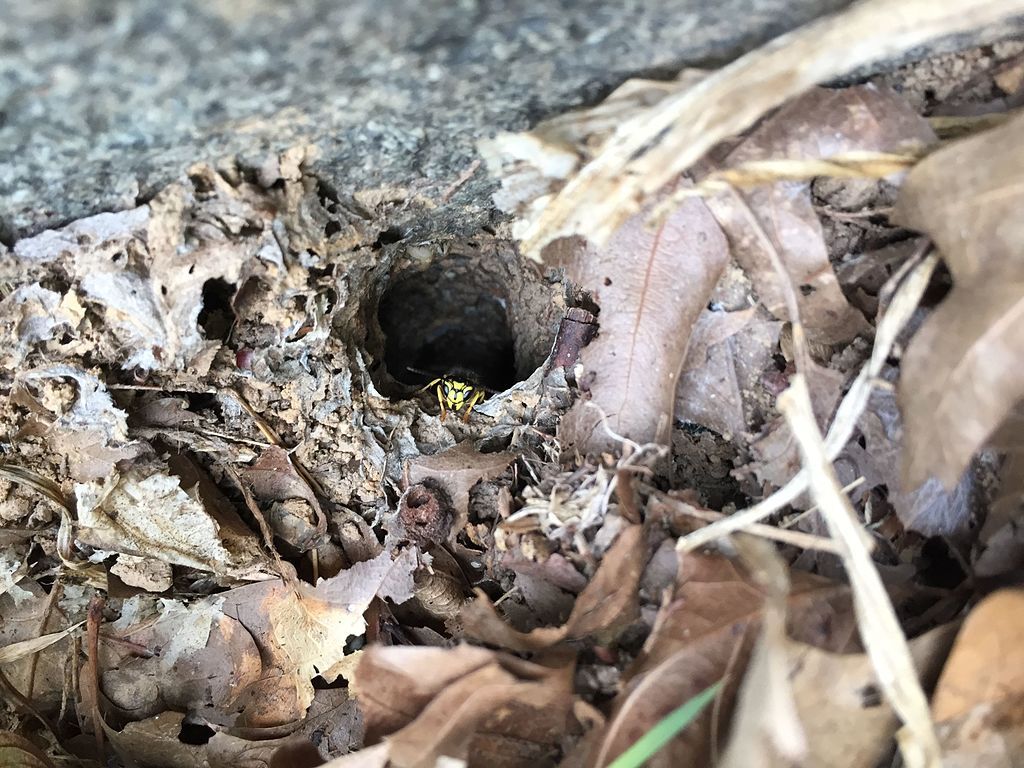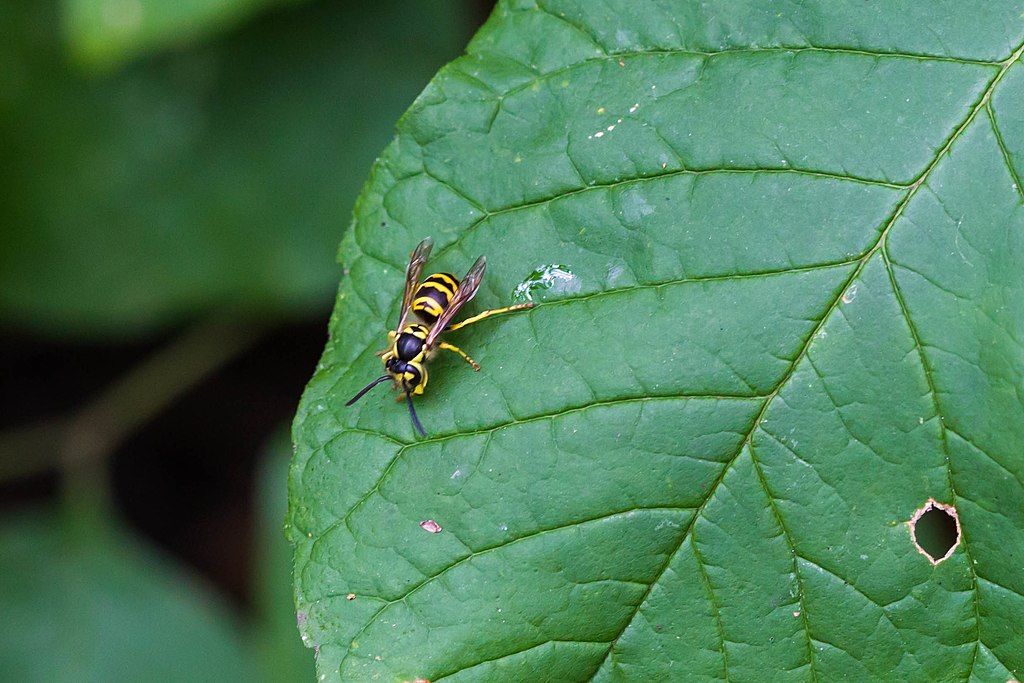
18 August 2020
Yellowjacket wasps are very active in late summer but you might not realize where they come from. These members of the Vespidae family build papery nests underground that they guard with all the stinging power they possess.

I learned about yellowjacket nests years ago — the hard way — when a person hiking near me stepped on a nest hole. The wasps poured out of the nest and attacked everyone. I ran but was stung anyway, just once. I was lucky. Individual yellowjackets can sting multiple times.(*)
Last Sunday I wasn’t paying attention to insects when I discovered a yellowjacket nest near a large rock at Moraine State Park. Fortunately I was standing well away from the hole and noticed the wasps going in and out.
As you can see, the hole was surrounded by weed-whacked grass that must have been cut the week before. Despite the surrounding debris the entrance was clear. I imagine the wasps moved the debris after stinging the person who held the weed whacker.
Don’t step near that hole!
(photos from Wikimedia Commons; click on the captions to see the originals. video by Kate St. John)
Last year the wasps built their best in the farthest corner of my blueberry patch. Several wasps flew “guard duty” around the patch but didn’t attack and I kept picking berries. One morning most likely a skunk dug up the 10″ across papery nest with egg chambers. A few wasps would fly near the nest debris but left after a few days.
Skunks are amazing about eating to yellowjackets. I guess skunks don’t mind getting stung … or maybe they smell so bad that the wasps leave them alone.